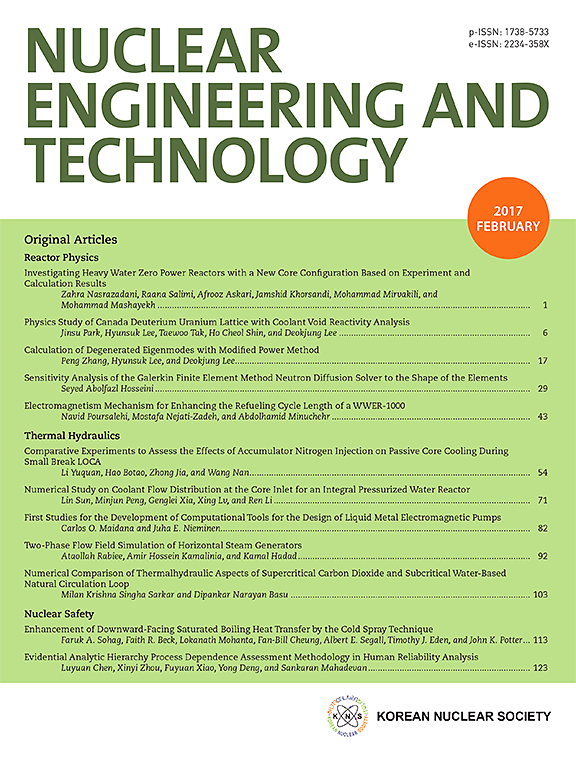对紧急工业放射源回收作业进行精确的剂量评估:四维蒙特卡洛剂量计算的初步研究
IF 2.6
3区 工程技术
Q1 NUCLEAR SCIENCE & TECHNOLOGY
引用次数: 0
摘要
利用高活度伽马辐射源进行工业射线照相的曝光装置经常会遇到辐射源卡住或断开等问题,给执行紧急取源操作的工人带来很大的辐照风险,因此强调准确剂量评估的重要性。本研究利用四维蒙特卡洛剂量计算和网格型参考计算模型,计算并比较了五种紧急放射源回收程序在回收卡住或断开的放射源过程中对主要工作人员造成的辐射剂量。对于卡住的放射源,两种放射源回收程序(即修复法和切割法)的剂量值相对较小,这表明工人可能会根据个人喜好或情况方便而选择其中一种方法。相反,对于断开的辐射源,三种辐射源回收方法(即捞取法、连接/推动法和热棒法)的剂量值要大得多,并显示出显著差异。值得注意的是,捞取法的剂量最低,而热棒法的剂量明显较高,相差达 5 倍。这些结果表明,捞取法是一种可取的方法,尤其是比热棒法更可取。本文章由计算机程序翻译,如有差异,请以英文原文为准。
Towards accurate dose assessment for emergency industrial radiography source retrieval operations: A preliminary study of 4D Monte Carlo dose calculations
The exposure devices utilizing high-activity gamma radiation sources for industrial radiography frequently encounter issues such as stuck or disconnected sources, posing a substantial risk of radiation exposure to the workers executing emergency source retrieval operations, emphasizing the importance of accurate dose assessment. In the present study, the radiation dose to the main worker during the process of source retrieval was calculated and compared for five emergency source retrieval procedures to retrieve stuck or disconnected sources, using 4D Monte Carlo dose calculation and a mesh-type reference computational phantom. For a stuck source, the dose values of the two source retrieval procedures (i.e., repair and cut methods) were found to be relatively small, which indicates that the worker might select either method based on personal preference or situational convenience. Conversely, for a disconnected source, the dose values of the three source retrieval procedures (i.e., fishing, connect/push, and hot stick methods) were much larger and show significant differences. Notably, the fishing method was associated with the lowest dose, whereas the hot stick method resulted in significantly higher doses, differences being as large as ∼5 times. These results underscore the fishing method as a preferable option, particularly over the hot stick method.
求助全文
通过发布文献求助,成功后即可免费获取论文全文。
去求助
来源期刊

Nuclear Engineering and Technology
工程技术-核科学技术
CiteScore
4.80
自引率
7.40%
发文量
431
审稿时长
3.5 months
期刊介绍:
Nuclear Engineering and Technology (NET), an international journal of the Korean Nuclear Society (KNS), publishes peer-reviewed papers on original research, ideas and developments in all areas of the field of nuclear science and technology. NET bimonthly publishes original articles, reviews, and technical notes. The journal is listed in the Science Citation Index Expanded (SCIE) of Thomson Reuters.
NET covers all fields for peaceful utilization of nuclear energy and radiation as follows:
1) Reactor Physics
2) Thermal Hydraulics
3) Nuclear Safety
4) Nuclear I&C
5) Nuclear Physics, Fusion, and Laser Technology
6) Nuclear Fuel Cycle and Radioactive Waste Management
7) Nuclear Fuel and Reactor Materials
8) Radiation Application
9) Radiation Protection
10) Nuclear Structural Analysis and Plant Management & Maintenance
11) Nuclear Policy, Economics, and Human Resource Development
 求助内容:
求助内容: 应助结果提醒方式:
应助结果提醒方式:


